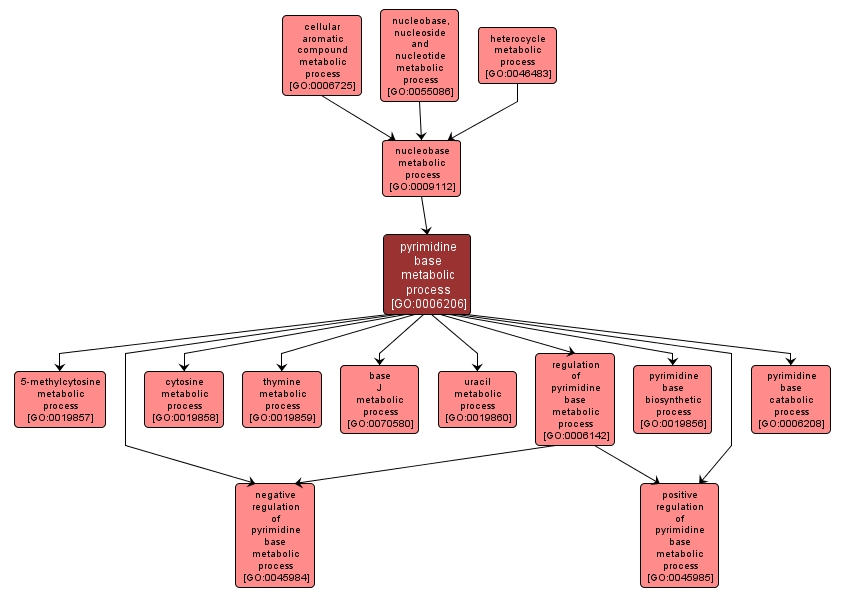GO TERM SUMMARY
|
| Name: |
pyrimidine base metabolic process |
| Acc: |
GO:0006206 |
| Aspect: |
Biological Process |
| Desc: |
The chemical reactions and pathways involving pyrimidine bases, 1,3-diazine, organic nitrogenous bases. |
Synonyms:
- pyrimidine metabolism
- pyrimidine metabolic process
- pyrimidine base metabolism
|
|

|
INTERACTIVE GO GRAPH
|














